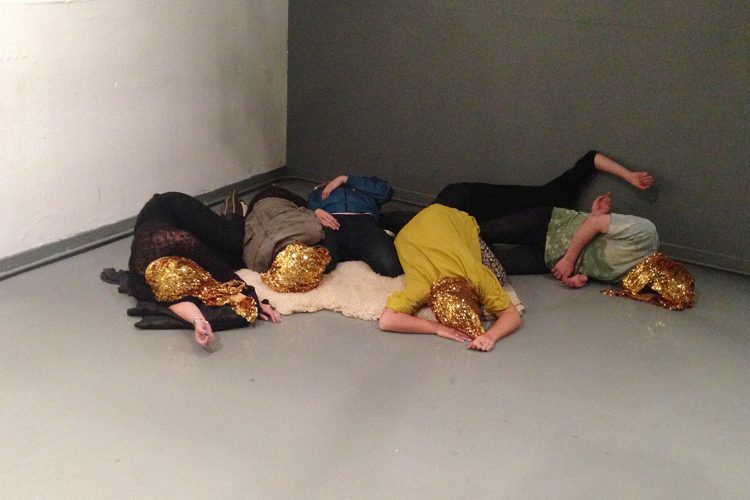Embodiment for Artists is a participatory, semester-long studio class in which we explore multiple modalities and physical practices to create art that is broadly called Performance. Though the class does not culminate in a final showing, it requires consistent participation and willingness to perform. We keep our focus on process and physical tools and techniques for making. Though Embodiment for Artists explores physical, performative techniques and studio practices, artists of all disciplines are welcome, and any practice will benefit from embodiment.
As a teacher, I draw on everything I know from my own art practice, which is grounded in physicality and comes from Dance. The bulk of this class – exercises, experimentation and creation – happens in class. In addition to exercises, assignments and prompts that I create, we study specific techniques from other artists and teachers such as Anne Bogart, Tadashi Suzuki, Bonnie Bainbridge Cohen, Kristen Linklater, BKS Iyengar and Moishe Feldenkrais. To this end, guest instructors also lend a vital component and in the past included Keith Hennessy and Julie Tolentino.
Lectures on and viewings of the lineage of embodied work compose a lesser, though no less important component and include artists such as Yvonne Rainer, Trisha Brown, Merce Cunningham, Pina Bausch, Tatsumi Hijikata, Ana Mendieta, Ralph Lemon, Leigh Bowery, Meredith Monk, David Hammons, Nick Cave, Coco Fusco, Cindy Sherman, Wangechi Mutu, Marilyn Minter… I make an effort to include artists who may fall onto the Dance side of the Visual Art conversation and thus may not have been covered in previous survey course study.
Consistent practices also include journal-writing and specific techniques for articulating our experiences and thoughts about our peers’ work with a critical mind expanded by moving.
Much of the reading for class happens in class as an embodied practice of articulation and comprehension. Writers include Peggy Phelan, Jack Halberstam, André Lepecki,
Course Objectives and Learning Outcomes
When we make work under the umbrella of New Genres (or Conceptual Art or Performance), technique and practice can get lost in our refusal to be classified. My objective is to share what I know about embodied performance and practice to provide a foundation from which to devise work, and concrete tools with which to make it. Learning outcomes will be an experience of embodied practice and a collection of techniques to draw upon when making cross-genre or hard-to-classify work. As a result, we will develop a collection of techniques for making work embodied by practice.
